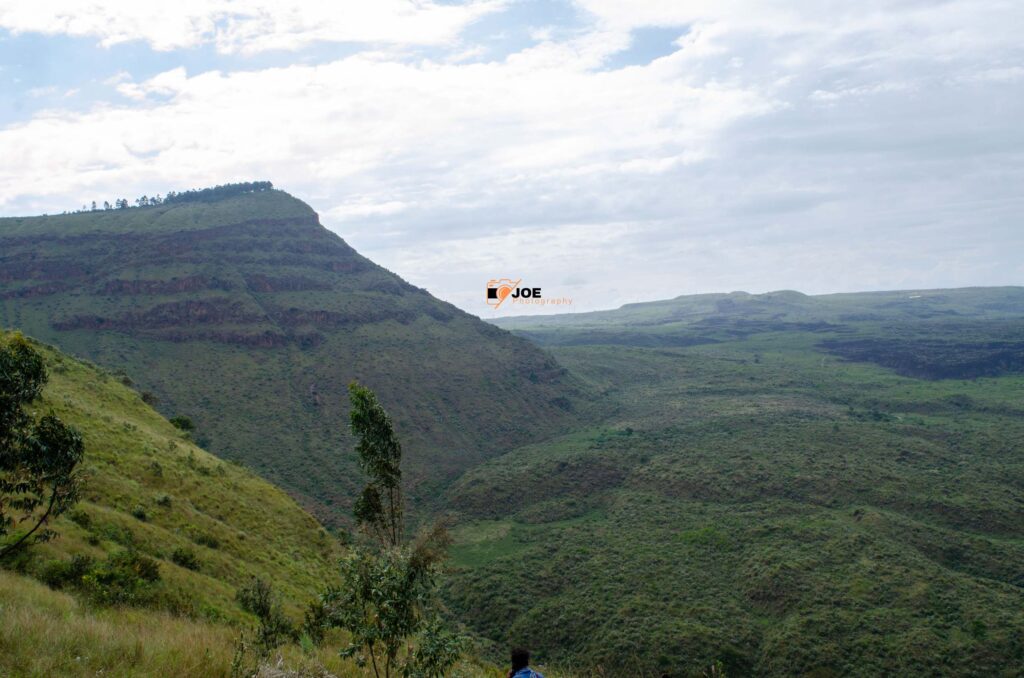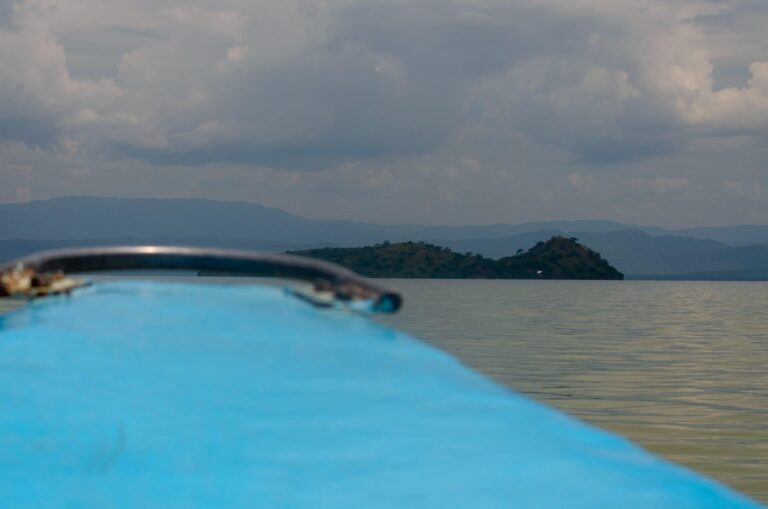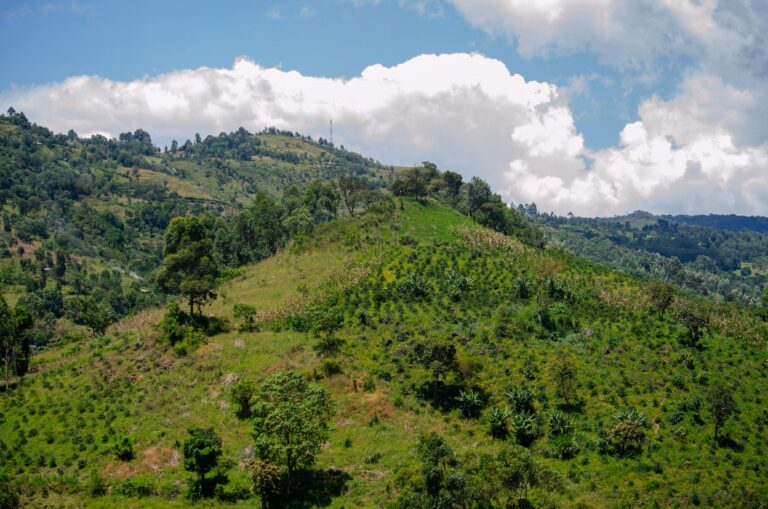Nakuru County, nestled in Kenya’s Great Rift Valley, is a haven for outdoor enthusiasts, offering a diverse range of hiking trails that cater to both novice and seasoned hikers. The region’s unique geological formations, lush forests, and abundant wildlife make it a prime destination for nature lovers. Here, we explore five of the best hiking trails in Nakuru County: Mount Longonot, Menengai Crater, Eburu Forest, Hell’s Gate National Park, and Lake Nakuru National Park.
Table of Contents
5 Best trails in Nakuru Kenya
1. Mount Longonot
Overview: Mount Longonot, a dormant stratovolcano, stands majestically at approximately 2,776 meters above sea level. Its name is derived from the Maasai word “Oloonong’ot,” meaning “mountains of many spurs” or “steep ridges,” aptly describing its rugged terrain. The mountain is part of Mount Longonot National Park, located about 60 kilometers northwest of Nairobi, making it accessible for day trips.
Trail Details:
- Distance: The hike from the park entrance to the crater rim is approximately 3.1 kilometers, with an additional 7.2-kilometer loop around the crater rim, totaling about 10.3 kilometers.
- Duration: Hiking to the rim typically takes 1.5 to 2 hours, with the full circuit around the rim adding another 2 to 3 hours, depending on pace.
- Difficulty: Moderate to challenging, due to steep ascents and uneven terrain.
Highlights:
- Scenic Views: Panoramic vistas of the Great Rift Valley and Lake Naivasha.
- Crater Exploration: The crater floor is densely forested, and while descending into the crater is not permitted, the rim offers spectacular views.
- Wildlife: Occasional sightings of zebras, giraffes, and buffaloes along the lower slopes.
Tips:
- Preparation: Carry sufficient water, wear sturdy hiking boots, and start early to avoid the midday heat.
- Guides: While the trail is well-marked, hiring a local guide can enhance the experience and provide valuable insights into the area’s ecology and history.
2. Menengai Crater
Overview: Menengai Crater, one of the world’s largest volcanic calderas, is located just north of Nakuru town. Formed over 200,000 years ago, the crater spans approximately 12 kilometers in diameter and plunges 500 meters deep, offering a dramatic landscape for hikers.
Trail Details:
- Distance: The main trail to the crater rim is about 8 kilometers round trip.
- Duration: Approximately 4 to 5 hours for the round trip.
- Difficulty: Moderate, with gradual inclines suitable for most fitness levels.

Highlights:
- Geothermal Activity: The crater is a site of significant geothermal activity, with steam vents visible in certain areas.
- Flora and Fauna: The area is home to diverse plant species and birdlife, making it a haven for nature enthusiasts.
- Cultural Significance: Menengai holds spiritual importance for local communities, with several legends associated with the site.
Tips:
- Access: The crater is easily accessible from Nakuru town, with roads leading up to the viewpoint.
- Safety: Stick to designated trails, as some areas can be unstable due to geothermal activity.
3. Eburu Forest
Overview: Eburu Forest, part of the larger Mau Forest Complex, is a lesser-known gem located near Lake Naivasha. The forest covers the slopes of Mount Eburu, an extinct volcano rising to about 2,850 meters. It offers a tranquil environment with rich biodiversity, including endemic plant species and wildlife.
Trail Details:
- Distance: Various trails range from short walks to longer hikes of up to 10 kilometers.
- Duration: 1 to 5 hours, depending on the chosen trail.
- Difficulty: Easy to moderate, suitable for families and casual hikers.
Highlights:
- Biodiversity: Home to the endangered Mountain Bongo antelope, colobus monkeys, and a variety of bird species.
- Hot Springs: Natural geothermal springs are found within the forest, offering unique spots for relaxation.
- Conservation Efforts: The forest is a focus of reforestation and conservation initiatives, providing educational opportunities for visitors.
Tips:
- Guided Tours: Engaging a local guide can enhance wildlife spotting and provide insights into conservation efforts.
- Permits: Entry may require a permit; check with local authorities or tour operators in advance.
4. Hell’s Gate National Park
Overview: Hell’s Gate National Park, named for its towering cliffs and geothermal activity, offers a unique combination of dramatic landscapes and wildlife. Unlike many other parks, visitors are allowed to explore the park on foot or by bicycle, providing an immersive experience.
Trail Details:
- Distance: The main gorge hike is approximately 2 kilometers, with additional trails extending up to 20 kilometers for cycling or extended hikes.
- Duration: 1 to 6 hours, depending on the chosen activity and route.
- Difficulty: Easy to moderate, with some steep sections within the gorge.
Highlights:
- Geological Features: Explore the Ol Njorowa Gorge, Fischer’s Tower, and Central Tower, showcasing impressive rock formations.
Wildlife: Common sightings include zebras, giraffes, antelopes, and numerous bird species, including vultures and eagles. You may even spot baboons and rock hyraxes in the gorge area.
Activities: In addition to hiking, Hell’s Gate offers rock climbing, cycling, and guided tours of geothermal plants, giving a comprehensive experience of this unique park.
Tips:
- Gear: Bring a camera, sunscreen, and plenty of water. Comfortable walking shoes are essential for navigating the gorge.
- Timing: Early morning or late afternoon hikes are ideal to avoid the midday heat.
5. Lake Nakuru National Park
Lake Nakuru National Park, famous for its flamingos and other bird species, is a UNESCO World Heritage Site that combines hiking with wildlife viewing. Its picturesque trails offer breathtaking views of the lake, surrounding forests, and dramatic escarpments.
Trail Details:
- Distance: Trails within the park range from 1 to 10 kilometers, with the most popular route leading to Baboon Cliff.
- Duration: 1 to 4 hours, depending on the chosen trail.
- Difficulty: Easy to moderate, suitable for all fitness levels.
Highlights:
- Bird Watching: Lake Nakuru is a bird lover’s paradise, with over 400 bird species, including flamingos, pelicans, and cormorants.
- Wildlife: Spot rhinos, lions, leopards, giraffes, and baboons during your trek.
- Scenic Points: Baboon Cliff, Lion Hill, and Out of Africa Lookout offer panoramic views of the lake and surrounding areas.
Tips:
- Park Entry: Entry fees apply, and guided tours are available for a more in-depth experience.
- Essentials: Bring binoculars for birdwatching and pack light snacks for longer hikes.
🏞️ Ready to Conquer New Heights? 🏔️
🚀 Join Joe Photography and Safaris for thrilling hiking adventures across Kenya! Meet new friends, explore breathtaking trails, and create unforgettable memories. 🌿✨
🎒 Join Our Hiking WhatsApp Group 🚀Hikes. Adventures. Friendships. Memories. 🌍
How to Prepare for the Hike
Embarking on a hike, whether it’s a casual walk or a challenging trail, requires proper preparation to ensure a safe and enjoyable experience. Here’s a comprehensive guide on how to prepare for a hike:
1. Research the Trail
Before heading out, research the trail thoroughly. Understand its difficulty level, distance, expected duration, and elevation. Trails like Mt. Longonot and Menengai Crater require more stamina, while Hell’s Gate and Lake Nakuru trails are more beginner-friendly. Check for any permits, fees, or rules specific to the trail.
2. Plan Your Route and Schedule
Map out your route and decide on start and end points. Estimate how long it will take, including breaks for rest and sightseeing. Start early in the morning to avoid hiking during the hottest part of the day and allow ample time to complete the trail before dark.
3. Pack Essentials
Prepare a well-thought-out daypack. Here’s what you should include:
- Water: Stay hydrated by carrying at least 2 liters of water per person.
- Snacks: Energy bars, nuts, and fruits to keep you fueled.
- First Aid Kit: Include basics like band-aids, antiseptic wipes, and painkillers.
- Navigation Tools: A map, compass, or GPS device, even if the trail is well-marked.
- Clothing Layers: Include a lightweight jacket for cooler weather or rain protection.
- Sun Protection: Sunscreen, sunglasses, and a wide-brimmed hat.
- Flashlight or Headlamp: In case your hike extends into the evening.
4. Wear Proper Gear
Comfortable and durable clothing and footwear are essential:
- Hiking Boots or Shoes: Choose sturdy, well-fitted footwear with good grip to prevent blisters and slips.
- Moisture-Wicking Clothes: Opt for lightweight and breathable fabrics to stay comfortable.
- Hat and Sunglasses: Protect yourself from the sun’s rays, especially on open trails like Mt. Longonot.
5. Check the Weather
Weather can make or break your hiking experience. Look up the forecast for the day and be prepared for sudden changes, especially in areas with variable climates like Eburu Forest or Menengai Crater.
6. Build Physical Fitness
If the hike is challenging, such as Mt. Longonot’s steep climb, prepare your body by engaging in cardio and strength training a few weeks in advance. Practice walking or jogging on inclines to build stamina.
7. Inform Someone of Your Plans
Let someone know your hiking plans, including your route and expected return time. This is especially important for remote trails like Eburu Forest, where cell service may be unreliable.
8. Hike with a Group or Guide
Hiking with a group adds safety and fun. For trails like Hell’s Gate or Menengai Crater, consider hiring a guide who knows the terrain and can provide valuable insights about the environment and wildlife.
9. Respect Nature
Follow the principles of Leave No Trace:
- Stay on designated trails.
- Don’t litter; pack out all your trash.
- Avoid disturbing wildlife.
- Keep noise levels to a minimum to preserve the tranquility of nature.
10. Mentally Prepare
A positive mindset is key. Be prepared for challenges and focus on enjoying the experience. Break the trail into manageable sections, take breaks as needed, and celebrate your progress.
By taking the time to prepare, you’ll ensure a safe, enjoyable, and rewarding hike, whether exploring Nakuru’s breathtaking landscapes or venturing into the heart of Kenya’s rugged wilderness.
FAQs on the Best Trails in Nakuru, Kenya
What are the best trails to hike in Nakuru?
The top hiking trails in Nakuru include Mt. Longonot, Menengai Crater, Eburu Forest, Hell’s Gate National Park, and Lake Nakuru National Park. Each offers unique landscapes and experiences, from volcanic craters to serene forest paths.
What level of fitness is required to hike these trails?
The fitness level required varies by trail. Beginner-friendly options like Lake Nakuru and Hell’s Gate are suitable for all fitness levels. More challenging trails like Mt. Longonot and Menengai Crater require a moderate to high level of fitness.
Do I need a guide to hike in Nakuru?
While some trails, like Hell’s Gate and Menengai Crater, are well-marked and can be explored independently, hiring a guide is recommended for remote trails like Eburu Forest to enhance safety and navigation.
What is the best time of year to hike in Nakuru?
The best time to hike is during the dry seasons, from June to October and January to February, when trails are less slippery, and the weather is ideal for outdoor activities.
Are there any additional activities to do on these trails?
Yes! In addition to hiking, you can enjoy activities like birdwatching at Lake Nakuru, cycling and rock climbing at Hell’s Gate, and photography at all locations. Many trails also offer stunning picnic spots and opportunities for wildlife viewing.
Also Read:


